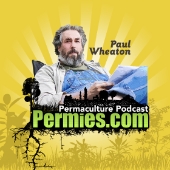Davis Austin wrote:I'm new to all of this. Please tell me what trees are good for starting a hugelkulture bed for vegetables, herbs and berries. I live in NE Arkansas and there are lots of "rotten" trees available. Hardwoods, conifers and the like if this area. Please someone help me!!!
I agree with the mantra "pine is fine"
and I'm just about convinced it may be preferred where building soil is concerned.
True, it is a soft wood, and you want hugelbeds to last a long time, but
I stumbled upon this guy's real world experiences recycling Christmas trees and
came away very impressed.
http://tomclothier.hort.net/page24.html
And from Paul Wheaton, here's a guy growing riparian species on top of a pile of spruce slash in an otherwise dry area:
http://www.youtube.com/watch?v=lWaEEdB6GZM
Who knows what it is... the sugar content? Rapid break down? Calcium in the bark? Moisture held up in all those needles? Vitamin C content?
Between those two I have zero reservations about pine. I even think the jury is out on allelopathy for me. So far, everything I've planted from seed under my pinon pines has germinated and grown well, and there's a pile of duff down there that I copped here and there from the nearby woodlands.
The plants includes...
alyssum, coriander, runner beans, and fava beans. And I want to try many more things under the pines. Pinon is not so dense a tree that it crowds out all of the light.
That first link also debunks the soil acidification theory for pine needles, which I also agree with.
Pine needles, in and of themselves, are slightly acidic. That is... about 6.5 according to the article, though I once tested some chopped ponderosa pine straw at 6.3.
Very close to his claim though.
The main thing to remember is that all organic materials biodegrade down to a near neutral pH, no matter how acidic or alkaline they begin at.
It is primarily the mineral content of a soil that determines the pH level.
Hope this helps.









